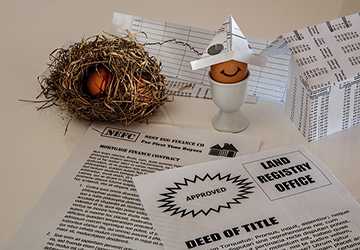Every loan process is long and daunting, and it isn't accessible if you are a first-time buyer. If you plan to buy a house, you need not jump into the process alone. Contact a trustworthy real estate agent and a house loan officer for guidance.
When you already know the process, making the most of it becomes even more convenient. In this guide, we have divided the process into eight steps, and it will help you be aware of each coming step so you can be prepared for questions and the decision you are expected to make. So, let's begin.

8 Steps to Navigate Home Loan Process
There are eight stages of getting the house loan approved. Follow these chronologically to have fruitful results. If you skip any step and go for a shortcut, there is a high passivity of load rejection. Hence, here is what you need to do for a smooth process
Determine your Budget
It is crucial to go through your assets before starting the loan process. First, you should know how many houses you can afford, and it will help you set some realistic goals. Do not define your maximum home purchase price, but evaluate your total buying power.
Moreover, consider what is included in the home payment. Remember that property taxes can affect your overall payment amount. The tariffs are lower in some regions, except that house insurance can be a part of your monthly payment.
Focusing on the total monthly payment plan instead of the maximum home purchase price, you can be sure that your budget will cover all expenses expected to come your way.
Consult a Lender and Get Pre-approval
The pre-approval for the house shows how much loan you can expect from a leader. Once you visit the leader, he evaluates your assets, income, and credit history. Remember that per-approval makes it easy to lock a deal with home sellers and real estate agents as you are already in touch with lenders.
Find a Property
Once you get the pre-approval, it is time to start looking for your dream house. You can visit the ideal area and look for a place of the required size. You can take assistance from a real estate agent, and he will help you find a suitable property.
After finding the ideal property, you need to make an offer. With a reasonable request, you must submit your earnest money deposit to lock the offer.
Get Home Inspection
Before finalizing the property, and as the work process, order a house inspection. This crucial aspect gives you a complete report regarding the weaknesses and break and expected renovation cost.
These reports give you more information about the house than you can see from the surface level. However, the central inspection areas include plumbing, roofing, electricity, and the overall structure of the house.
After the report, if you think the renovation cost is too high, consider any other house. You can use this point in further negotiation even if you keep the purchase.

Submit the House Application
Once you have finalized the house and the lender you will work with, you need to fill out a house application. Submit all necessary documents to complete your application to proceed with loan formalities. After a couple of days, the lender will disclose the rates, fees, and the actual extent of the loan.
House Underwriting
Underwriting begins as your lender visits the application and confirms your income, assets, debt, and property details. As your verification is completed, you need to wait for the final approval of the loan application. As a borrower, it is crucial, and waiting time can depend on your case. If the leader is suspicious about a sure thing, he will call you again for cross-questioning, but no need to worry. Your loan application will be approved if you are telling the truth and are confident.
Arrange the Down Payment
You are just an inch away from closing the deal at this step. Here comes the role of a down payment. You have to pay a down payment to claim the property as well as you need to pay the closing cost agreed upon as well as proof of homeowner insurance.
This step's details are in the document you receive after completing the mortgage underwriting. It is crucial to review all records, especially financial ones, to avoid complications.
Close on Your New House
The final step of the loan process is attending your closing day meeting and officially taking charge of the house. At the last meeting, you must sign mandatory documents, and both parties can ask any question about the property or sale.
The final meeting will end with the attorney and title company. If you are unavailable for an in-person meeting, you can also attend an e-meeting. It might take some more days to sign the documents. You can take the keys and control of the house as soon as documentation is done.
Conclusion
The loan process is complex and daunting for some people. Therefore, we have divided the process into manageable steps. All you need to do is find a suitable lender and ideal property. Once you lock in the deal with the house owner, you can proceed with the loan officer. Having all the documents will make your process more accessible and less time-consuming.





